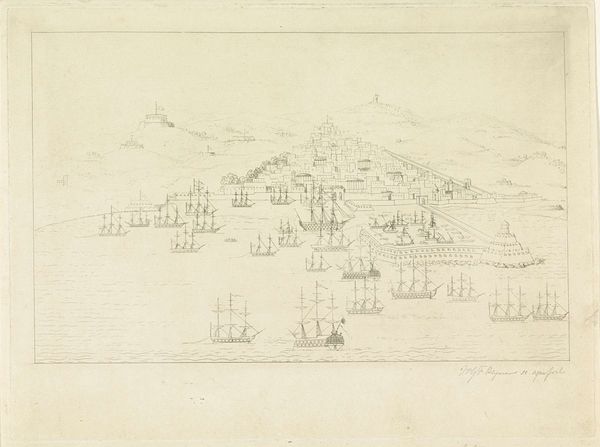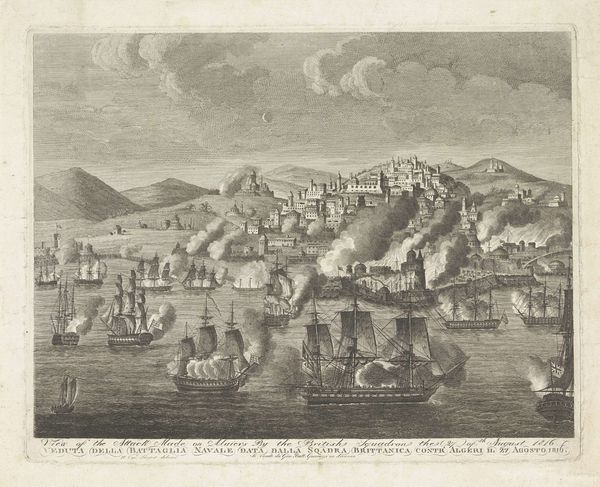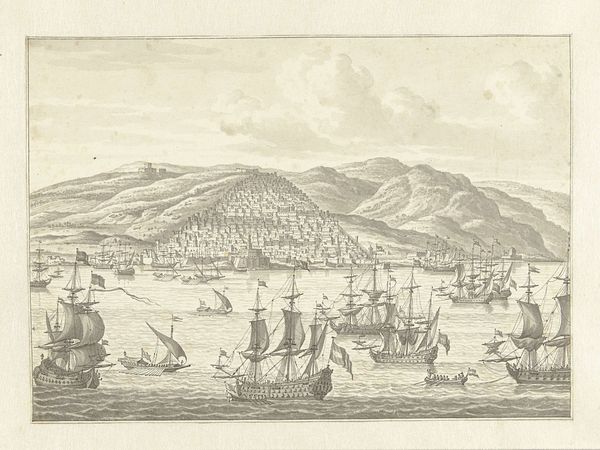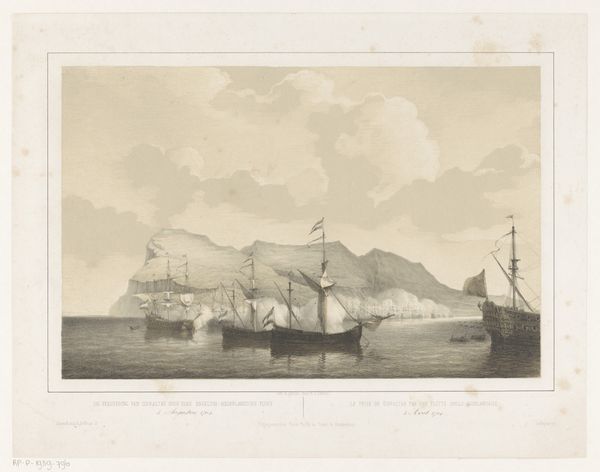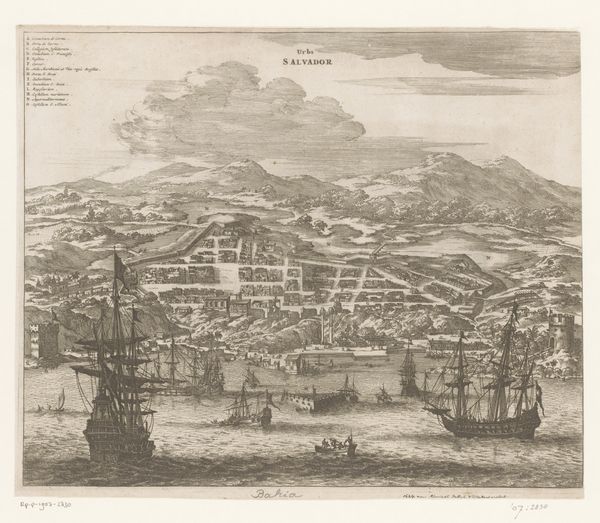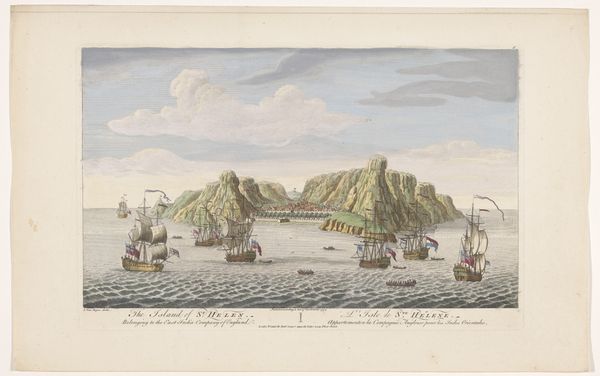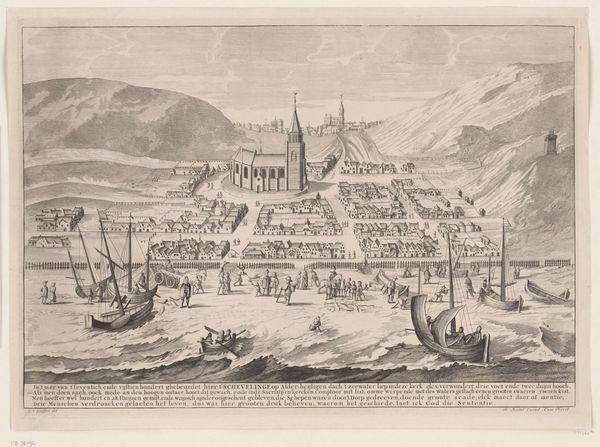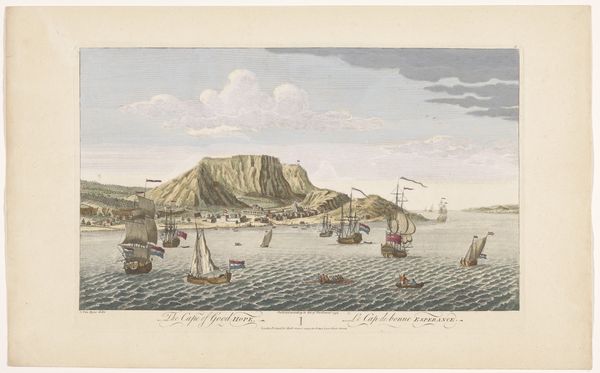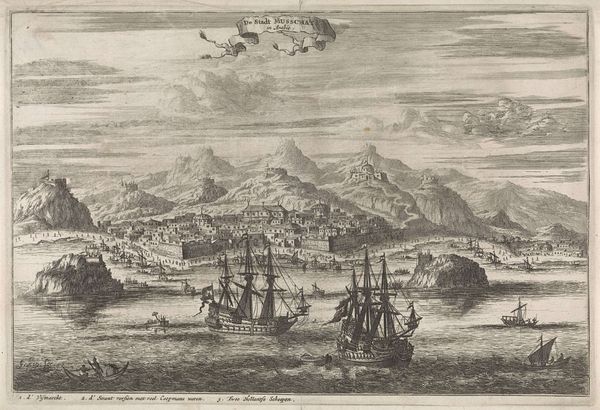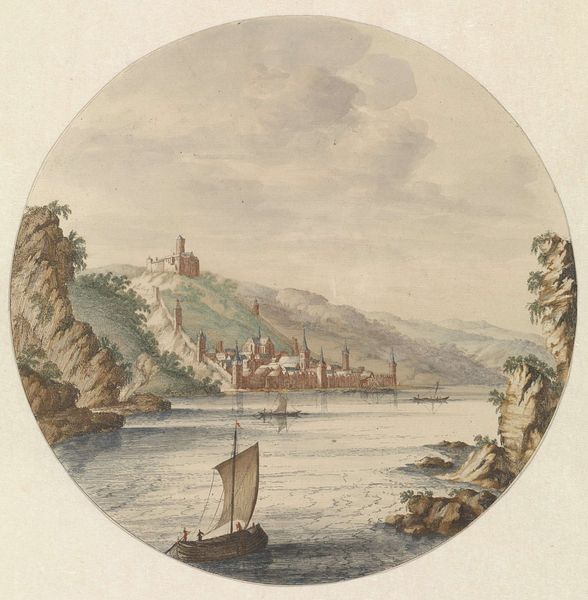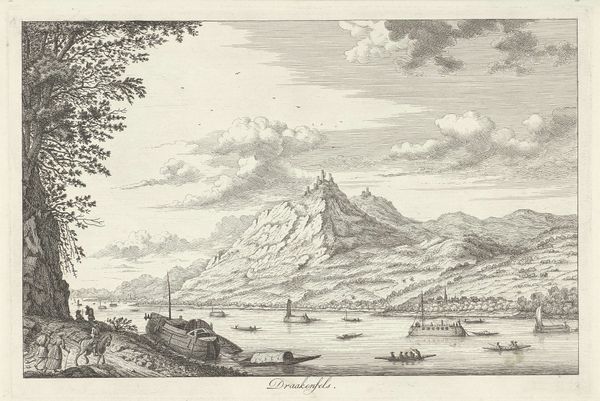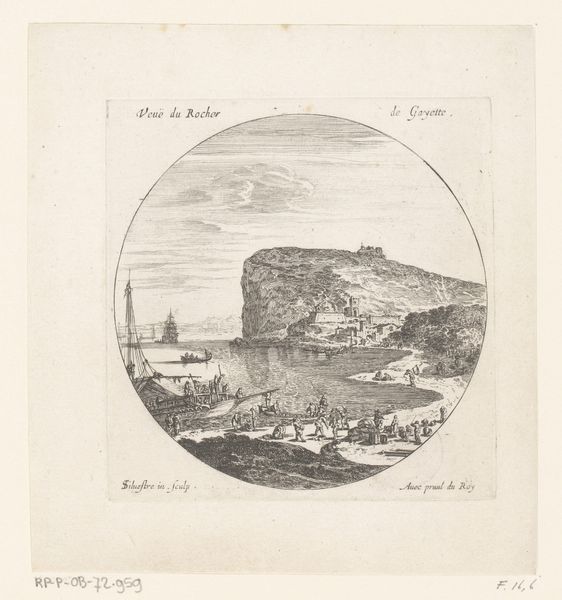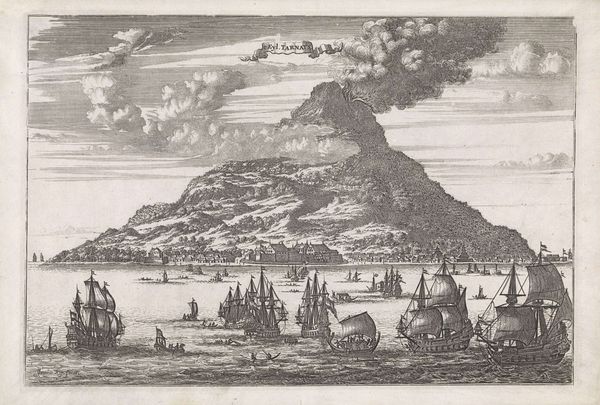
Dimensions: height 225 mm, width 285 mm
Copyright: Rijks Museum: Open Domain
Editor: This print, “Schepen voor de kust bij een havenplaats” by Reinier Vinkeles, dating from 1751 to 1816, captures a vibrant port city from afar. It's beautiful, though somewhat romanticized. What aspects of the art historical period influence your interpretation of it? Curator: Considering its place in history, what stands out is how Vinkeles is both documenting and shaping public perception of maritime power and trade. The city on the hill isn't just a scenic backdrop. What social values are promoted through these images, especially at a time when the Dutch Republic's global influence was shifting? Editor: I see your point. The composition does glorify the ships, placing them prominently, while the city almost seems…subservient to the naval presence. Do you think that's intentional? Curator: Absolutely. Remember, prints like these were widely circulated. The image subtly reinforces a narrative of maritime strength equaling national prosperity. Notice how the detail given to the ships' flags, perhaps subtly asserting dominance in a competitive trade environment? Editor: That's fascinating, I hadn't considered the political undercurrent. Does the stylistic choice of engraving also contribute to the message? Curator: Good question! Engraving, with its crisp lines and capacity for detail, lends an air of precision and authority. It suggests an objective record, even when the image is carefully constructed to convey a specific message. What did you initially find romantic about it? Editor: The serenity and scale of the boats is very eye-catching, so they drew me in. Learning that such seemingly picturesque scenes also had political messages feels new to me. Curator: It’s crucial to consider art as participating in a broader cultural and political discourse. Even seemingly innocent landscapes contribute to a nation's self-image and its projection of power. Editor: Thanks! It's shifted my perspective completely, providing historical context for the city on the sea and boats. Curator: Indeed, context is essential. Next time, think about whose perspective is prioritized in an artwork, and what societal function that choice serves.
Comments
No comments
Be the first to comment and join the conversation on the ultimate creative platform.
